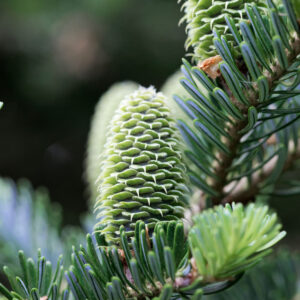Description
Latin Name: Betula populifolia
Other Common Names: Gray Birch, Asian White Birch
Hardiness Zones: 3-7
Mature Size: The Gray Birch is known for its rapid growth and relatively short lifespan, typically reaching 20-40 ft (6-12 m) in height. It commonly features either a single trunk or multiple trunks (Missouri Botanical Garden).
Preferred Soil and Climate: Native to eastern New England, Gray Birch thrives in well-drained, moist soils. It prefers full sun to partial shade and can tolerate poorer, rockier, or sandier soils, as well as some dry conditions. It thrives best in cooler climates with cool summers and snowy winters, but does not fare well in hot and humid conditions. It cannot withstand prolonged flooding (Missouri Botanical Garden).
Additional Notes: Gray Birch generally requires minimal pruning; any necessary pruning should be done when the tree is dormant rather than in spring. Under favorable conditions, it spreads via suckers. The bark is characterized by a whitish-gray color with dark patches beneath each branch. Unlike paper birch, Gray Birch’s bark does not peel off. Its leaves are triangular with a pointed tip, approximately 3 inches (7-8 cm) long, with toothed edges. They are initially bright and shiny green, turning yellow-brown in autumn. Small flowers appear in early spring in catkins; male catkins are light brown or dark yellow, around 4 inches (10 cm) long, while female catkins are green and about ½ inch (1 cm) long. The tree bears cone-shaped fruits filled with numerous small, winged seeds that mature by late summer. Twigs are rough, and the bark, though white, does not peel like that of paper birch (Missouri Botanical Garden).
Common Issues: Gray Birch weakened by heat or humidity may be susceptible to birch borers, which can be fatal to the tree (Missouri Botanical Garden).
Wildlife: Gray Birch attracts finches and other small seed feeders.
Cold Stream Farm supplies Gray Birch trees which are grown as bare root seedlings and transplants and sold both wholesale and retail with no minimum order.
Sources:
- Virginia Tech Dendrology: Gray Birch
- Missouri Botanical Garden: Betula populifolia











Reviews
There are no reviews yet.